What Your Dog’s Tail Shake Really Reveals About Their Emotions!
Shristy sinha | Mar 21, 2025, 16:02 IST
Dog showing Gesture
We often interpret our dog's tail wagging as their excitement, but tail wagging is not only limited to showing happiness. Dogs use tail wagging to show all the different kinds of emotions, whether it is happiness, fear, anger or even neutral. This article will help you to understand what our dog is wanting to convey through his tail.
Dogs are often referred to as man’s best friend, and with good reason. Their loyalty, companionship, and emotional understanding of their owners make them exceptional pets. One of the most universally recognized behaviors in dogs is tail wagging, a simple yet intriguing action that can convey a wide range of emotions. However, contrary to common belief, a wagging tail does not always signify happiness or excitement. Instead, a dog's tail shake can tell us a lot about their emotional state, desires, and even their intentions. By observing the nuances of this behavior, dog owners can gain valuable insight into their furry companions' feelings.

Before we dive deeper into what different tail movements mean, it’s important to understand the mechanics of tail wagging. A dog's tail is an extension of its spine, and its movements are governed by their muscles and the nerves along their spinal cord. A dog wags its tail as a way of communicating, whether it's trying to express a feeling, engage with another dog or human, or signal something in their environment.
The specific way a dog’s tail wags can be influenced by several factors, including the speed, direction, height, and even the posture of the dog’s body. A simple wag can carry vastly different meanings depending on the context, and sometimes, even the tiniest shift in movement can reveal a lot about what a dog is feeling.
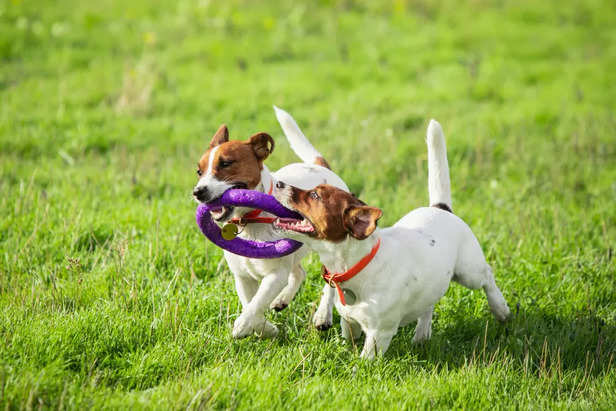
It’s no surprise that a happy dog will often wag its tail enthusiastically. This is perhaps the most commonly recognized tail movement. When a dog is excited or content, its tail may wag rapidly and fluidly, usually with the tail held low or mid-level. If a dog is particularly excited, the wagging may be accompanied by the dog’s entire back end shaking as well. This exuberant wagging is commonly seen when a dog greets its owner after a long day or when they are playing and having fun.
However, it’s important to note that the excitement and happiness being expressed by tail wagging can be tied to other positive experiences too, like anticipating a walk, getting a treat, or seeing a familiar person or animal. The frequency and speed of the wagging may vary depending on how thrilled the dog feels in that moment.
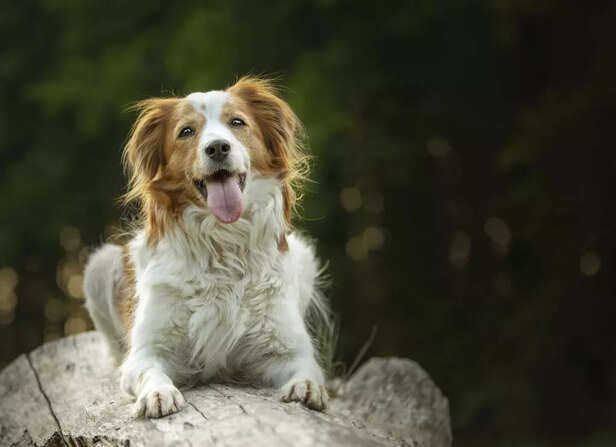
Sometimes a dog’s tail might wag slowly, without much enthusiasm or sudden jerks. This is often a neutral expression, where the dog is neither particularly excited nor agitated. A dog’s tail held in a neutral position with a soft, slow wag usually suggests that the dog is calm and relaxed. This could occur when a dog is surveying its environment or interacting with others without any strong emotions driving its behavior.
A neutral tail wag is sometimes seen when dogs are meeting new individuals or exploring a new environment, signaling that they are open to interaction but not overly invested in the situation. In these cases, the tail movement serves as a polite, non-threatening gesture to show friendliness without expressing excessive joy or fear.
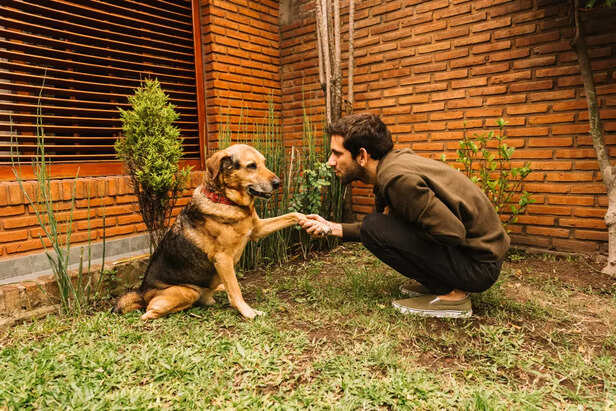
Not all tail wags indicate joy or excitement. When a dog feels nervous, insecure, or submissive, the tail might wag, but it will often appear more tentative or low. A tail that is held low or tucked between the legs while wagging gently can signify that the dog is feeling submissive or anxious. This kind of wagging is commonly seen in situations where the dog feels unsure of its surroundings, is trying to avoid conflict, or is attempting to signal deference to another animal or person.
A dog may also wag its tail in a slow and hesitant manner when meeting new people, especially if they have not had prior positive experiences with strangers or are unsure of the situation. In these moments, the dog might be unsure about what is going to happen next and may be signaling its intention not to pose a threat.

Interestingly, a tail wag can also signal aggression, though the context and posture of the dog are key to recognizing this. When a dog wags its tail rapidly while holding it high and rigid, this can indicate that the dog feels threatened, protective, or defensive. In these cases, the wagging is often stiff and deliberate, and the dog may be preparing to defend itself or establish dominance.
An aggressive tail wag can also be accompanied by other signs of hostility, such as growling, showing teeth, or raising the hackles on its back. If you notice this type of tail wag, it’s best to be cautious and give the dog plenty of space, as it may be a warning that the dog is feeling territorial or unsafe.
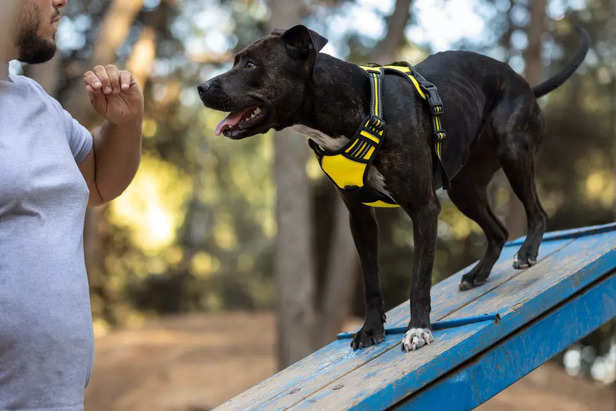
Fearful tail wagging is often confused with happy tail wagging due to the similarity in appearance. However, there are distinct differences. When a dog is afraid, its tail might wag slowly or at half the speed of an excited wag. In this case, the tail is usually held low or tucked between the dog’s legs, and the wagging will often be brief and hesitant. This behavior can be accompanied by other signs of anxiety, such as panting, whimpering, or attempting to hide.
Dogs who are afraid might use their tail as a way of signaling submission, hoping to de-escalate a potentially dangerous situation. A fearful wag is a way for the dog to communicate that it poses no threat and wishes to avoid confrontation.
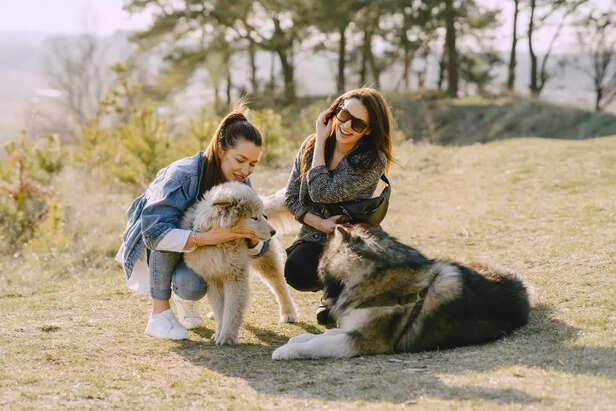
Dogs use their tail as a social tool, particularly in interactions with other dogs. For instance, a dog that is meeting another dog might wag its tail to show that it is friendly and non-aggressive. This tail wagging will often be coupled with other body language cues such as crouching, tilting the head, or offering a play bow (front end lowered while the back end remains high). In these cases, the tail is a sign that the dog is ready to socialize, play, and establish positive relationships with others.
Dogs are also highly attuned to the tail movements of other dogs. In a group of dogs, tail wagging can signify everything from dominance and submission to friendship and aggression. Dogs can interpret the direction and speed of a wag to determine whether a particular dog is a friend, foe, or neutral party.
A dog’s tail shake is much more than a simple gesture of excitement or happiness. By closely observing the movement of their tail, owners can better understand the complex emotional world of their canine companions. Whether it’s a sign of joy, submission, fear, or aggression, the tail serves as a powerful tool for communication, allowing dogs to convey their feelings and intentions in ways that humans can interpret and respond to.
As responsible pet owners, it’s essential to pay attention to the full spectrum of tail movements, as they can provide important clues about how a dog is feeling. Understanding these subtle signs can help strengthen the bond between dog and owner, promote better communication, and foster a deeper level of empathy and care in our interactions with these incredible animals.
Understanding Tail Language

Girls meeting dogs
Before we dive deeper into what different tail movements mean, it’s important to understand the mechanics of tail wagging. A dog's tail is an extension of its spine, and its movements are governed by their muscles and the nerves along their spinal cord. A dog wags its tail as a way of communicating, whether it's trying to express a feeling, engage with another dog or human, or signal something in their environment.
The specific way a dog’s tail wags can be influenced by several factors, including the speed, direction, height, and even the posture of the dog’s body. A simple wag can carry vastly different meanings depending on the context, and sometimes, even the tiniest shift in movement can reveal a lot about what a dog is feeling.
Happy or Excited Tail Wags

Dogs Playing
It’s no surprise that a happy dog will often wag its tail enthusiastically. This is perhaps the most commonly recognized tail movement. When a dog is excited or content, its tail may wag rapidly and fluidly, usually with the tail held low or mid-level. If a dog is particularly excited, the wagging may be accompanied by the dog’s entire back end shaking as well. This exuberant wagging is commonly seen when a dog greets its owner after a long day or when they are playing and having fun.
However, it’s important to note that the excitement and happiness being expressed by tail wagging can be tied to other positive experiences too, like anticipating a walk, getting a treat, or seeing a familiar person or animal. The frequency and speed of the wagging may vary depending on how thrilled the dog feels in that moment.
The "Neutral" Tail Wag

A dog Sitting Calmly
Sometimes a dog’s tail might wag slowly, without much enthusiasm or sudden jerks. This is often a neutral expression, where the dog is neither particularly excited nor agitated. A dog’s tail held in a neutral position with a soft, slow wag usually suggests that the dog is calm and relaxed. This could occur when a dog is surveying its environment or interacting with others without any strong emotions driving its behavior.
A neutral tail wag is sometimes seen when dogs are meeting new individuals or exploring a new environment, signaling that they are open to interaction but not overly invested in the situation. In these cases, the tail movement serves as a polite, non-threatening gesture to show friendliness without expressing excessive joy or fear.
Submissive or Cautious Tail Wags

A man Shaking Hands with a Dog
Not all tail wags indicate joy or excitement. When a dog feels nervous, insecure, or submissive, the tail might wag, but it will often appear more tentative or low. A tail that is held low or tucked between the legs while wagging gently can signify that the dog is feeling submissive or anxious. This kind of wagging is commonly seen in situations where the dog feels unsure of its surroundings, is trying to avoid conflict, or is attempting to signal deference to another animal or person.
A dog may also wag its tail in a slow and hesitant manner when meeting new people, especially if they have not had prior positive experiences with strangers or are unsure of the situation. In these moments, the dog might be unsure about what is going to happen next and may be signaling its intention not to pose a threat.
Aggressive or Defensive Tail Wags

Dog showing aggresion
Interestingly, a tail wag can also signal aggression, though the context and posture of the dog are key to recognizing this. When a dog wags its tail rapidly while holding it high and rigid, this can indicate that the dog feels threatened, protective, or defensive. In these cases, the wagging is often stiff and deliberate, and the dog may be preparing to defend itself or establish dominance.
An aggressive tail wag can also be accompanied by other signs of hostility, such as growling, showing teeth, or raising the hackles on its back. If you notice this type of tail wag, it’s best to be cautious and give the dog plenty of space, as it may be a warning that the dog is feeling territorial or unsafe.
Fearful Tail Wags

A Dog standing on a wooden board
Fearful tail wagging is often confused with happy tail wagging due to the similarity in appearance. However, there are distinct differences. When a dog is afraid, its tail might wag slowly or at half the speed of an excited wag. In this case, the tail is usually held low or tucked between the dog’s legs, and the wagging will often be brief and hesitant. This behavior can be accompanied by other signs of anxiety, such as panting, whimpering, or attempting to hide.
Dogs who are afraid might use their tail as a way of signaling submission, hoping to de-escalate a potentially dangerous situation. A fearful wag is a way for the dog to communicate that it poses no threat and wishes to avoid confrontation.
Tail Wagging and Social Interactions

Dogs meeting people
Dogs use their tail as a social tool, particularly in interactions with other dogs. For instance, a dog that is meeting another dog might wag its tail to show that it is friendly and non-aggressive. This tail wagging will often be coupled with other body language cues such as crouching, tilting the head, or offering a play bow (front end lowered while the back end remains high). In these cases, the tail is a sign that the dog is ready to socialize, play, and establish positive relationships with others.
Dogs are also highly attuned to the tail movements of other dogs. In a group of dogs, tail wagging can signify everything from dominance and submission to friendship and aggression. Dogs can interpret the direction and speed of a wag to determine whether a particular dog is a friend, foe, or neutral party.
Conclusion
As responsible pet owners, it’s essential to pay attention to the full spectrum of tail movements, as they can provide important clues about how a dog is feeling. Understanding these subtle signs can help strengthen the bond between dog and owner, promote better communication, and foster a deeper level of empathy and care in our interactions with these incredible animals.
Pet Picnic Spots in Indian Cities You’ve Never Heard About
By Tanisha Kumari
Rickshaw, Metro or Cab: Which Ride Do Pets Prefer?
By Tanisha Kumari
The Harsh Reality of Boarding That No Pet Parent Wants to Face
By Tanisha Kumari
Backpack Pets Are the New Fashion Statement
By Tanisha Kumari
Pet cafés & their rising popularity across India & abroad
By Tanisha Kumari
Gear Up: Top 4 Essentials for Outdoor Dog Safety
By Tanisha Kumari
Vrindavan’s Eternal Harmony, Krishna’s Friendship with Animals and Birds
By Hindveer
